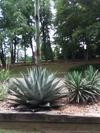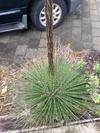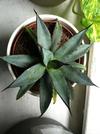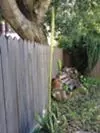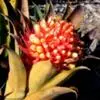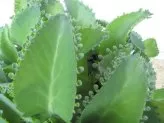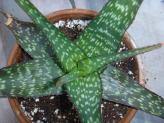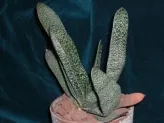The Textural and Architectural Century Plant
Called the Century Plant for a good reason, Agave live for many years in dry and inhospitable conditions. Desert plants from the southern United States and Mexico, they are slow growing, and some species never get very big, staying at a very tidy softball sized clump for most of their lives.
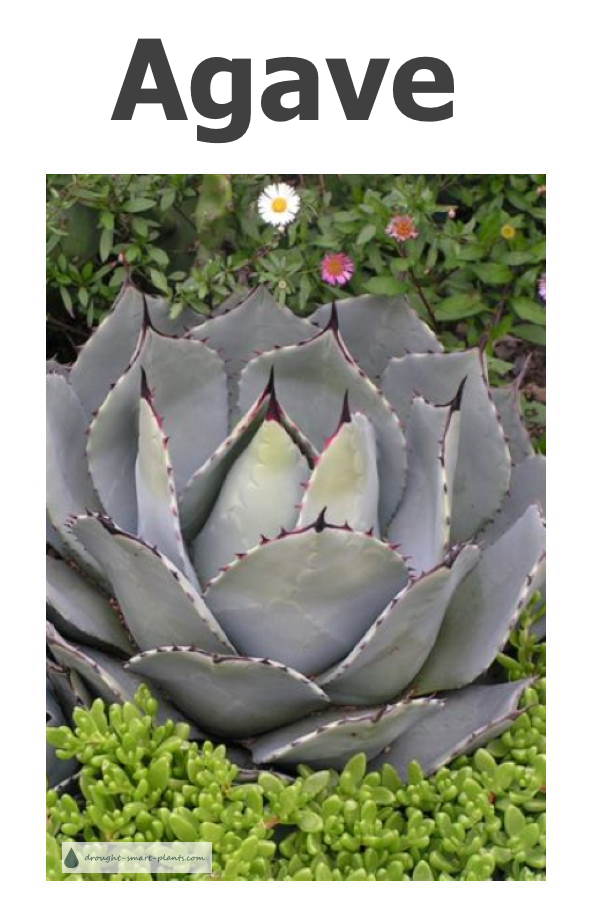
In some areas, the clumps are the size of a small car, comprised of many rosettes of spined leaves, warning the unwary to stay away.
One unique characteristic of Agave is the single spine at the end of every leaf.
Although they may resemble Aloe in some cases, this single thorn is there to remind you that they are not to be messed with.
Quick Facts About Agave;
If you’ve got a plant with wicked spines on the ends of every leaf, you may have an Agave. These tough as nails plants are well armed. Those thorns hurt! Often, commercial nurseries and growers will prune these off to make the plant a little more friendly to the general public.
There are many different forms of Agave.
Some are the size of a teacup, others much more robust. The ones you get as house plants won’t stay that size! You can be sure they’ll outgrow their pot, and your house in a couple of seasons.
Meanwhile, enjoy their architectural growth habit, in particular the watermarks left on the leaves as each successive layer opens. These plants are very drought tolerant.
Their soil requirements are easy going, and they actually prefer to be somewhat root bound.
Don’t repot them too often, they will just grow to fit the pot. In time, they will produce ‘pups’ or small plants around the base – cut these off, or just twist them to remove them to pot on separately.
It’s a good idea to keep a few young’uns started to replace the aging mother plant – she’ll die if she ever blooms. Sometimes the flower stalks can be twenty feet tall, making this type of plants a logistical nightmare.
Because of the thorns, it’s best to plant these away from trafficked areas, and out of reach of children, who are right at the level to get these in their face.
Some growers cut these off, to make it easier for workers when handling them.
Many Agave also show ‘watermarks’ – a distinctive pattern caused by the pressure of each row of leaves on the outer surface of the inner row of leaves.
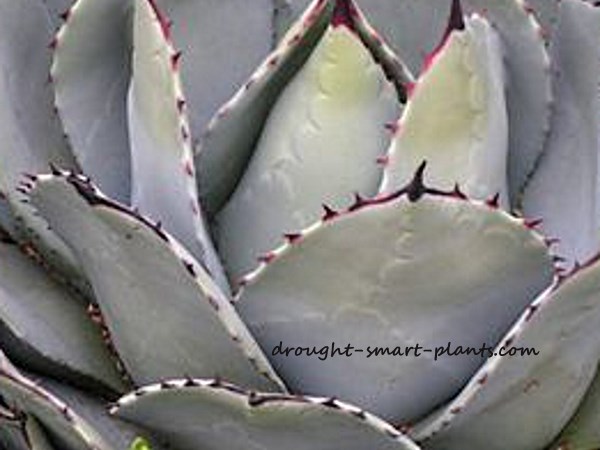
The juice from the leaves is used commercially to make pulque, or tequila. It is also poisonous until it’s received the right treatment in the manufacture of this potent beverage.
To grow these indoors as houseplants, it’s best to select those that stay small, and even then, their lifespan is only about ten years before they’ll outgrow their space.
Luckily, they produce pups at their base, so it’s usually possible to keep named varieties or specialty variegated ones going indefinitely.
In a landscape, they will grow very slowly for ten to fifty years, and then suddenly put out a flower stalk, which can tower overhead at over 3 meters (15′) tall.
This is not a plant for a well behaved and domesticated landscape, rather a rough and rugged themed desert garden.
The pages below have been left by other visitors…
See more about Agave…
7 amazing Agave types for the desert garden
It doesn’t matter whether you live in a dry area that requires a desert garden (xeriscaping) or in a location that gets plenty of rain. Agaves are for …
Larger-Agave-unsure-of-name-Awsome-teeth-cactus-succulent-not-aloe
Bought on eBay. Desc was Larger-Agave-unsure-of-name-Awsome-teeth-cactus-succulent-not-aloe. Yup, that’s an Agave alright. The dead giveaway is …
Giant succulent with 8′ tall shoot that is branching out at the top
Like a THICK LEAFED Aloe – non-varigated. About 2 foot + tall with 8 foot (or taller) shoot that is branching out like “Whoville” – Growing in middle Georgia, …
Very very tall grew in days
Tall central shoot What a surprising sight! The last thing you would expect is something this bizarre, but just wait; it’s going to get even better! …
Possible Agave?
I just purchased an unidentified succulent, and would like to know what it is, to best care for it. I think it might be a variety of agave, but please …
a huge cactus that has a spike coming out of it.
Our cactus or succulent was planted fifteen years ago and has grown to be a massive plant in our back yard. Just recently it started to grow a spike out …
Very cool succulent that grows to over 23 feet
Cactus looking plant that grows to over 23 feet and blooms at the top. Very cool plant that has me thinking. Please help with an answer.Thanks Drought …
Found…
When I moved in, this was in the backyard. It recently sent up a very tall stalk. Drought Smart Plants reply: Wow, what a surprise! I would say, …
looks like a type of agave, not sure
5 inch upright leaves, spiny edges Drought Smart Plants reply: Hi David, the dead giveaway trait for Agave is the lethal spike from the end of each …
Exotic spiny plant
This plant is large the “leaves” are longer than a foot and tubular and stiff with a spine at the end. I haven’t seen it bloom. The liquid inside the …
Need help identifying this plant
Has very sharp pointed ends. Drought Smart Plants reply: Hi Roxanne, it looks like what you have based on the description of the sharp pointed …
Full Sun Succulent
It was in full sun near the headquarter building at Mustang Island State Park The low-growing plant is similar to a yucca but it’s long, thin leaves …
Laguna Beach Succulent
Aloe type leaves, yellow-green, short, with a dome of buds or flowers in red and yellow. Drought Smart Plants reply: This is an Agave of some …



